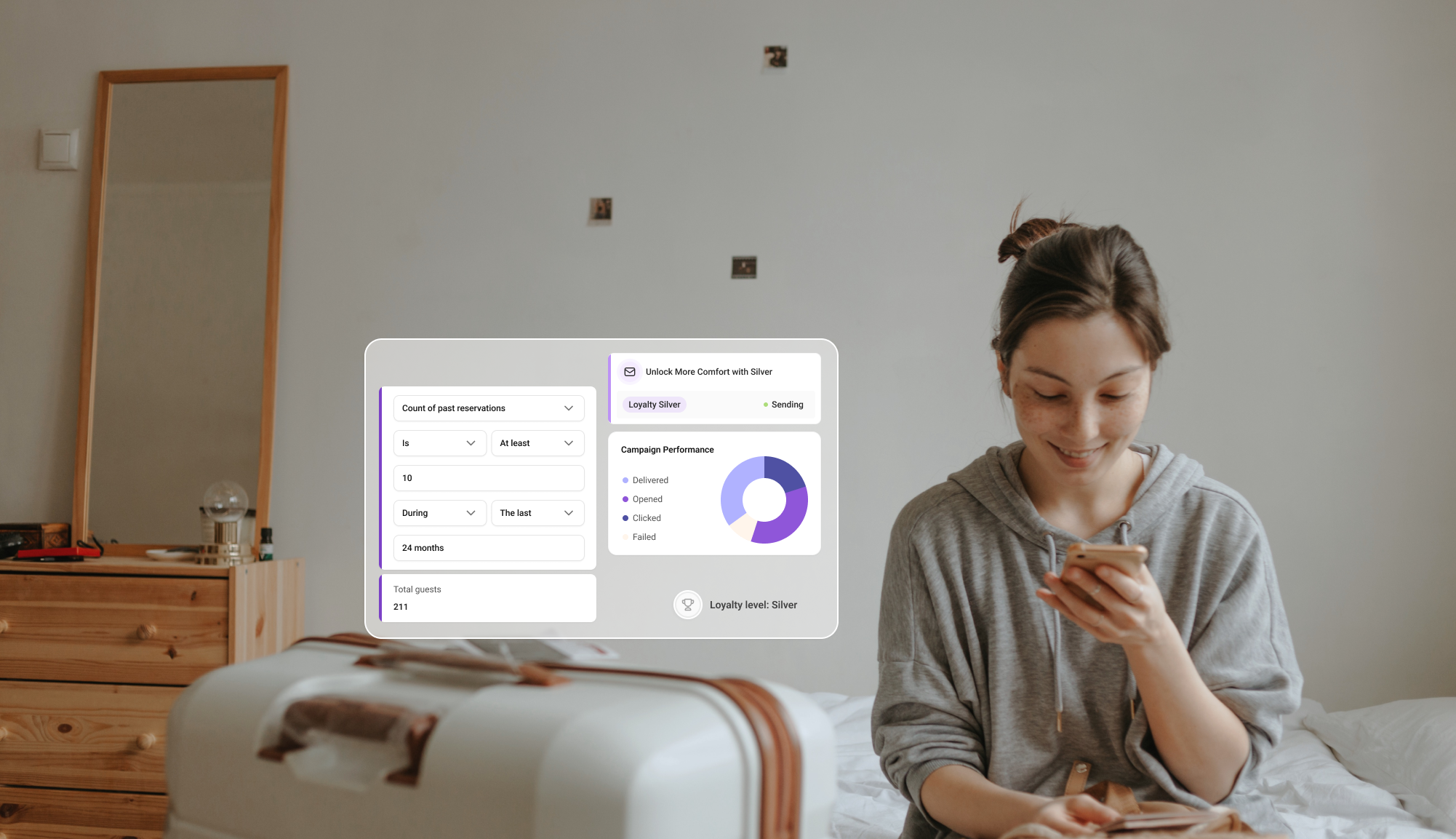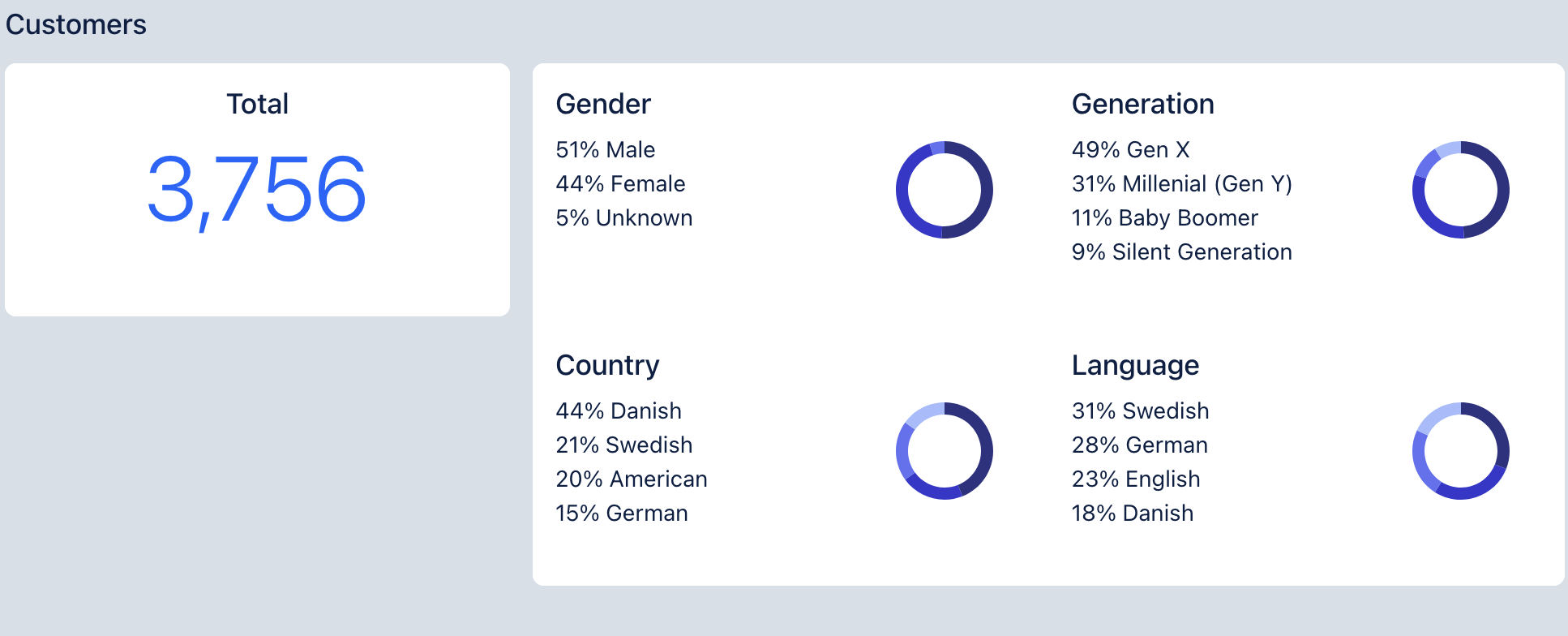

Marketing to guests is no longer just about timing. It’s about hotel guest segmentation: reaching the right person, with the right message, at the right moment.
Bookboost is a hotel CRM that offers advanced guest segmentation capabilities to help hoteliers create smarter, more tailored campaigns.
Whether you’re targeting guests before they check in, engaging returning visitors, or refining your communication based on booking behaviours, our CRM is built to make your marketing work harder and smarter.
Let’s break it down.
Not all segmentation tools offer the same level of depth. Some only provide basic CRM filters, which limits your ability to create precise guest groups or tailor your messaging effectively.
Here’s how Bookboost stands out.
This level of detail is often missing in other systems. Bookboost lets you filter between three distinct roles:
- Booker: the person who made the reservation
- Guest: the person who’s actually staying at the property
- Debtor: the person who paid
Why does this matter?
Take group bookings for example. A company might book and pay for several employees, but the individuals staying at the hotel are different. With Bookboost hotel CRM filters, you can send pre-arrival information to the guest while sending payment reminders or receipts to the debtor.
Or think about gift bookings. Someone might reserve and pay for a weekend getaway on behalf of a friend or family member.
Bookboost allows you to engage the actual guest, not just the person who booked, with tailored messages like: “We hope you enjoy the spa package your partner booked for you” or “Your weekend escape is all set, here’s everything you need to know.”
This precision is key for delivering relevant pre-arrival communication and a strong guest engagement strategy.
Learn more about how to use your first-party data in segmentation
Many tools only allow hotel marketing campaigns to start a few days before check-in or after the stay begins. Bookboost CRM segmentation features enable you to reach out as soon as a reservation is made.
That means you can send booking confirmations, upsell offers, or helpful guides early, when guests are still planning and most open to additional services.
Early guest engagement gives you more opportunities to connect, build anticipation, and increase revenue.
One of the biggest advantages of using Bookboost is the wide range of filters you can combine to create unlimited guest segments that actually make sense for your business goals. These hotel CRM filters are key to crafting high-impact campaigns.
Here are 10 of the most-used filters Bookboost customers rely on to create effective segments:
What it means: The number of guests in a single reservation.
Use case: Create different messages for solo travellers, couples, or families.
Why it matters: Different guest counts mean different needs. A solo guest might appreciate quiet workspaces, while a family might want activity recommendations.
What it means: How many times a guest has stayed with you in the past.
Use case: Send loyalty perks or “Welcome back!” messages to returning guests.
Why it matters: Recognising loyal guests builds relationships and increases the chance of future direct bookings.

What it means: The current status of the reservation (e.g. confirmed, cancelled, pending).
Use case: Follow up on cancelled bookings or send check-in details to confirmed guests.
Why it matters: Reaching out based on status ensures your message is relevant and timely.
What it means: The check-in and check-out date range for a reservation.
Use case: Promote local events happening during a guest’s stay or send weather-related packing tips.
Why it matters: Timing is everything, especially when guests are planning their trip.
What it means: How many nights a guest is staying.
Use case: Offer a late check-out to short-stay guests or upsell packages to long-stay visitors.
Why it matters: A guest staying one night may want efficiency, while a longer stay offers more touchpoints for engagement.
What it means: Whether a guest belongs to a specific contact list you’ve created (e.g. VIPs, event attendees).
Use case: Target past wedding guests with anniversary offers or reach out to VIPs with exclusive benefits.
Why it matters: Lists let you speak directly to pre-defined guest groups with relevant campaigns.
What it means: The domain of the guest’s email address, which can indicate booking source (e.g. @booking.com, @expedia.com).
Use case: Send direct booking incentives to OTA guests for future stays, or send personalised messages asking them to complete their guest profile so you can collect missing data like email address or preferences.
Why it matters: Knowing how guests booked helps tailor your strategy and increase direct bookings.
What it means: The specific nights that a reservation includes (not just the date range).
Use case: Target weekend guests with event guides or upsells like late check-outs.
Why it matters: Certain nights (e.g. Saturdays) may present unique guest needs or revenue opportunities.
- What it means: How many upcoming bookings a guest has at your property.
- Use case: Reward frequent future bookers with sneak peeks or early check-in offers.
- Why it matters: These guests are already committed, it’s a prime opportunity to nurture loyalty and upsell.
- What it means: Whether a guest has already received specific campaigns from you.
- Use case: Exclude repeat recipients from follow-ups or create “second wave” campaigns with different content.
- Why it matters: Prevents message fatigue and keeps your communication fresh and relevant.
Looking to reach guests in a more personalised way? Bookboost CRM is ready to help you reach your goals. Book a demo here.
Now that you've seen the filters that matter most, let's walk through a real campaign example to see segmentation in action.
Segmentation isn’t just about filtering, it's about using those filters to understand your guests and create campaigns that feel relevant and personal. Here's how to turn segmentation into action using Bookboost:
Let’s say you want to target first-time OTA guests who are staying more than 3 nights.
Start by combining filters like receiver_domains (to identify OTA guests), future_reservations_count = 0 (first-time guests), and stay_length > 3. This gives you a clear list of new guests who booked through an OTA and are staying for multiple nights.
Once your segment is created, Bookboost helps you get a quick overview: how many guests are in this group, when they’re staying, and which properties they booked. This helps you decide how to prioritise the campaign and what kind of message would be most valuable.


Now that you know who they are and what they might care about, you can build a personalised campaign.
You can deliver this message through email, SMS, or WhatsApp, depending on the guest’s preferences. The earlier in the guest journey you send it, the more likely they are to engage and share their details.
By combining the right filters with actionable insights, you can turn even a first-time OTA guest into someone who feels personally welcomed and more likely to book directly next time.
Explore 9 guest segment ideas you can start creating today for better hotel marketing.
Hotels of all types are using Bookboost to put guest segmentation strategies into action and create more relevant, personalised marketing.
They use segmentation to personalise welcome emails for repeat guests. By identifying how many times a guest has stayed, they tailor the tone and content of each message, making the experience feel more personal every time.
A second-time guest might receive a warm “Welcome back,” while a fifth-time guest could get an exclusive loyalty offer.
They love the sheer number of filters available. Their team segments guests based on booking channel, visit history, and guest type. That means they don’t send the same info to everyone, a returning guest who booked directly gets a different message than a first-time OTA guest.
They also use different communication channels based on guest preferences, from email to WhatsApp and SMS.
Multi-channel communication is also key to driving higher conversions. Find out why here.
From reaching guests earlier to tailoring messages based on exact booking context, Bookboost gives you the tools to go beyond generic campaigns.
If your hotel is ready to make segmentation a competitive advantage, let’s talk. Book a demo today.
Are you ready to increase your revenue and build lasting guest relationships? Take the first step today.